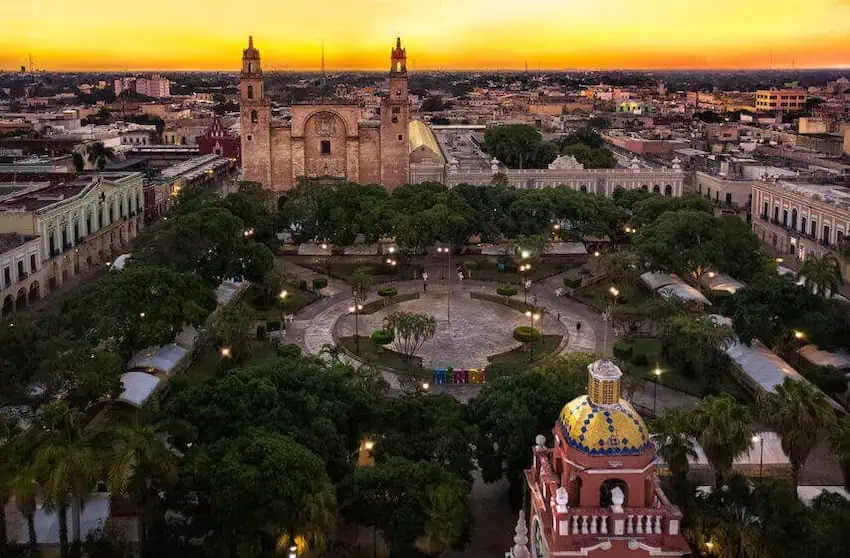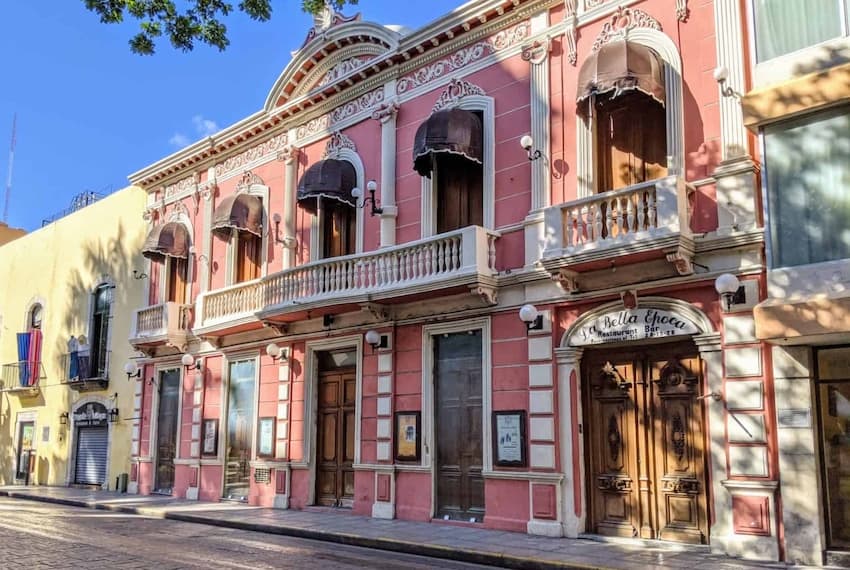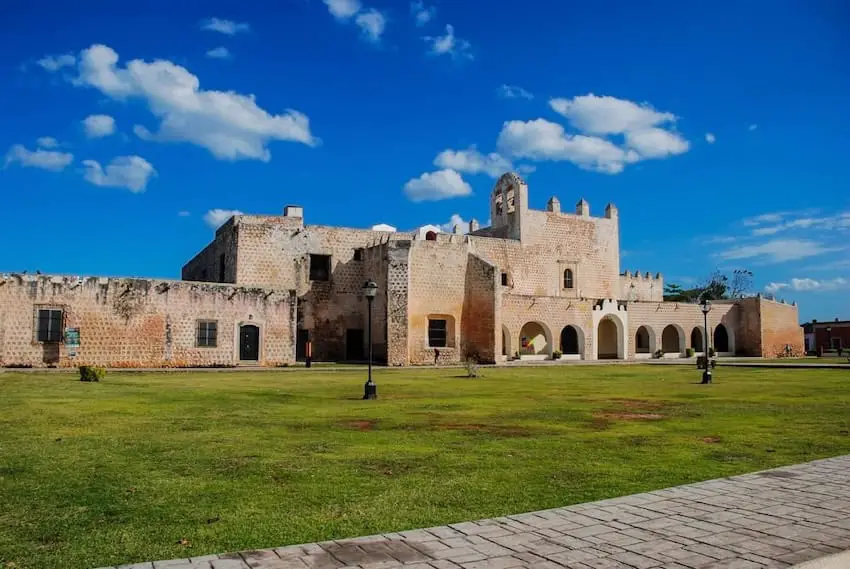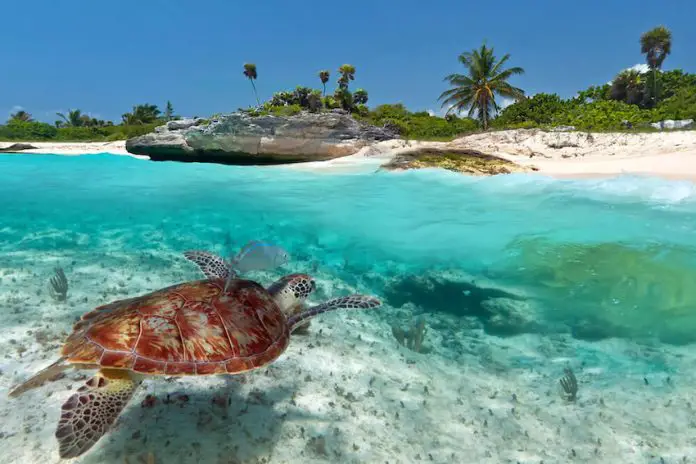There are places in Mexico that not only defy deeply held views about Mexico but challenge whether a place easily fits into our understanding of Mexico’s national identity. Yucatán is the smallest of the three Peninsula States, part of a thumb-shaped peninsula that separates the Gulf of Mexico from the Caribbean. But it’s the home of a foundational Mesoamerican culture (the Maya), once held one of the richest cities in the Western Hemisphere, and is a place where physical isolation historically begat a cultural wellspring unmatched across Mexico. It’s a country within a country and has twice proclaimed in the 19th century its independence from Mexico as the Republic of Yucatan.
Let’s explore three Yucatan State locations ideal for short or long-term living: urban Mérida, beachy Progreso, and the colonial town of Valladolid.
Mérida

Just about every visitor or transplant will immediately exalt Yucatan’s many, many assets. And the next thing (inevitably) is “But the heat!” Soaring temperatures and humility (and hurricanes) can be insurmountable challenges for many, earning the State a “2” Climate ranking (our lowest) for year-round living. A daily, annual mean temperature of 28 Celcius (82 F) (soaring near 38C (100F) in spring months), eyewatering humidity averaging 70%, and 40 inches of (sometimes) cooling rain, means you’ll learn fast to let this climatic obstacle go (when you live here) and instead celebrate Mérida’s compensatory quality of life advantages. In 2022, the United Nations Habitat City Prosperity Index recognized Mérida as the city with the highest quality of life in Mexico.
Mérida is Mayan at its heart, the largest urban concentration of Mayan Amerindians in all the world. The city (population 920,000; 1.3 million in greater area) is strewn with archaeological sites and enveloped in contemporary Maya culture. Maya speech permeates the city’s markets, and traditional Maya styles of dress prevail, along with Yucatecan (and international) cultural events. A uniquely Yucatecan manner of speaking and wicked sense of humor (Bomba!) add to the linguistic adventure and jovial nature of “Meridanos”.
A uniquely Yucatecan look and feel permeate the historic downtown — parks, plazas, the once palatial Paseo Montejo, French and Italian-styled mansions, and leafy “colonias.” Some call it “criollo,” a syncretism over centuries of Spanish-Mayan cultural mash-up laced with a 19th-century flood of wealth from an agricultural boom that bejeweled the city with exquisite European architectural gems.
Many choose to live in the city’s grid-like urban core (some restore colonial era homes), while others find green and shady residential neighborhoods with yards, parks and an almost mandatory dipping pool to cool off. North-south traffic can be maddening, and getting into and out of the historic downtown core with your own car has its challenges. But public bus transportation is frequent and inexpensive. The sprawling city is tortilla flat and its grid layout is easy to navigate on foot.

With universities (over 20), museums and performing arts fueling a steady agenda of things to do, you’ll also find an expat community hailing from around the world. Many expat entrepreneurs operate retail businesses. Most who have parachuted into living here are extroverted in their civic pride, volunteer activities, social calendars, and penchant for outings to explore Yucatan’s colonial villages, cenotes, haciendas, beach towns, birdwatching natural areas, and Mayan archaeological treasures. The city’s baseball and futból teams (and fine stadiums) are another popular pastime.
The dining scene is sophisticated, reflecting Yucatecan ingredients and culinary traditions, found at celebrity-chef restaurants and bustling food stalls. Modern malls, Mayan mercados, and box stores (plus the world’s only Costco location with a cenote in the parking lot) are part of the weekly routine for many foreign-born transplants. It’s worth noting that Yucatan State is generally considered Mexico’s safest, a point often cited by thousands of migrants from other parts of Mexico. Mérida’s hospitals are the highest rated in Mexico’s southeast.
Progreso

Mérida is not on the coast, but another viable location for transplants in the port city of Progreso, a 45-minute drive to the north. Population 37,000 (not counting hundreds of U.S. and Canadian, mostly seasonal residents), Progreso is on every Meridano’s escape-to-the-beach route for seaside fun and (somewhat) cooler temperatures. As a commercial and passenger cruise port, Progreso has an attractive Gulf of Mexico-facing pedestrian seafront, white sand lapped by emerald Gulf waters, and a bustling high-season and holiday commercial vibe (especially on weekends).
Foreigners living here (a fraction of the Mérida expat community) tend to be beach focused. The closer you live to the coast, the higher the prices are.
It’s common to have village-like social connections with your Mexican neighbors. Non-profits like the Progreso Apoyo Program can help with education, volunteering and meeting folks. Note how when the snowbirds pick up and leave (during March and April), the town’s commercial pace settles into quiet weekdays interrupted by the weekend and holiday “invasions” from Mérida.
Valladolid

Smaller coastal and inland towns also find their share of foreign-born transplants, many of whom wander back north during summer (heat) and fall (hurricane) seasons. Valladolid certainly deserves a call-out, as it is located in eastern Yucatan State and is the halfway point between Mérida and Cancun. Population 56,000, Valladolid is a popular day trip spot for Cancun/Riviera Maya vacationers — with more coming thanks to a Tren Maya railway stop here. Vacationers come for cenote swimming, Mayan ruins, Spanish colonial architecture, and an energetic village vibe. It’s very walkable, with easy biking options too.
Folks moving here skew a bit more European-South American, likely resulting from the town being closer to the Mexican Caribbean coast and the Cancún Airport. A Pueblo Magico designation in 2012 has brought positive changes, municipal beautification, public concerts, and investment. A growing local artisan movement, galleries (including Mexico’s finest private collection of folk art, Casa de los Venados), and more international dining are positive changes for a town founded in 1543! Calzada de los Frailes is lined with dining, galleries and local bars. Rents and home purchases carry lower costs here than urban Mérida or beachy Progreso.
You’ll have shopping options from a well-stocked Chedraui to a robust mercado municipal and weekly tianguis street markets. Two hospital options (one private) provide care and access to some specialized medicine. No longer an “outpost,” Valladolid is growing up and embracing its 21st-century integration into Mexico’s national tourism economy.
The ratings
![]()
What did we get right? What do you disagree with? Let us know in the comments.
Author Greg Custer lives in Mexico. He’s worked for over 40 years in international tourism, educating travel advisors around the world about Mexico and other Latin American destinations. He helps folks explore Mexico for living at www.mexicoforliving.com.
